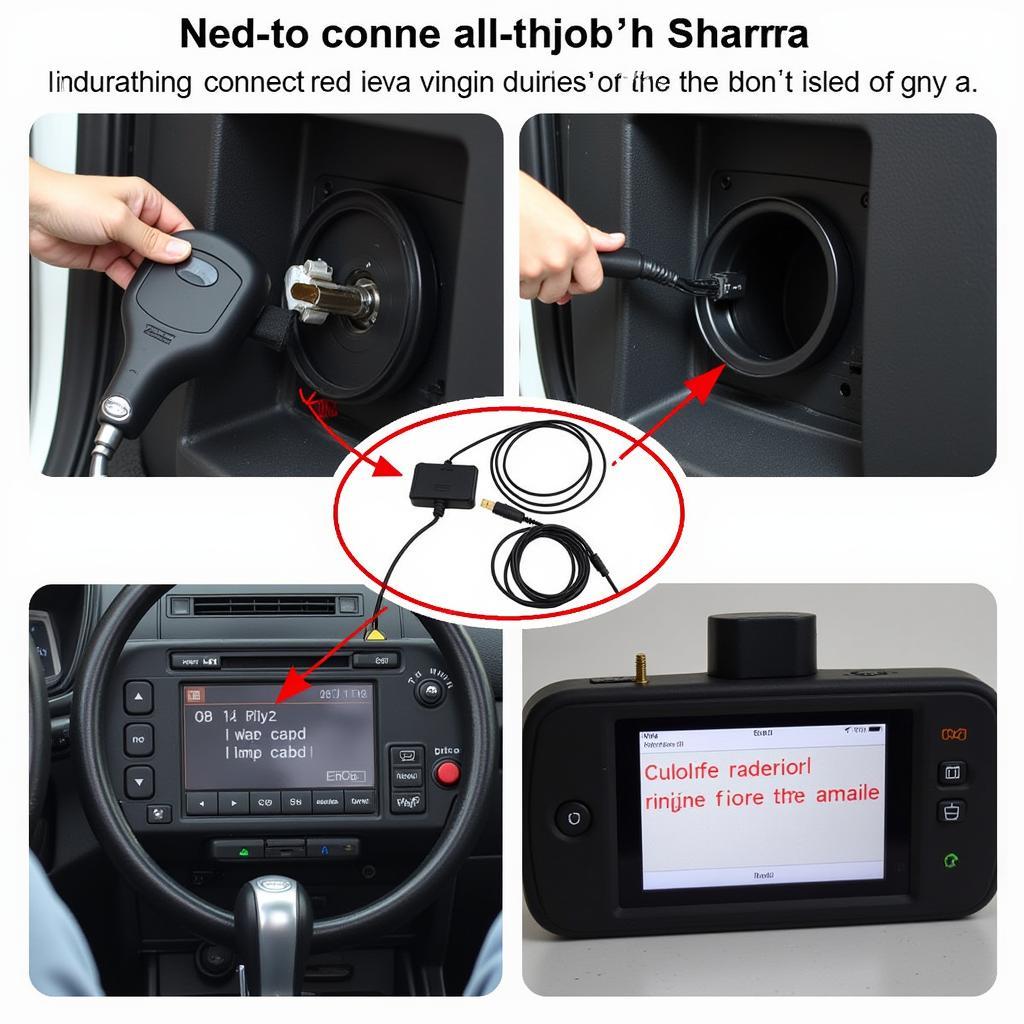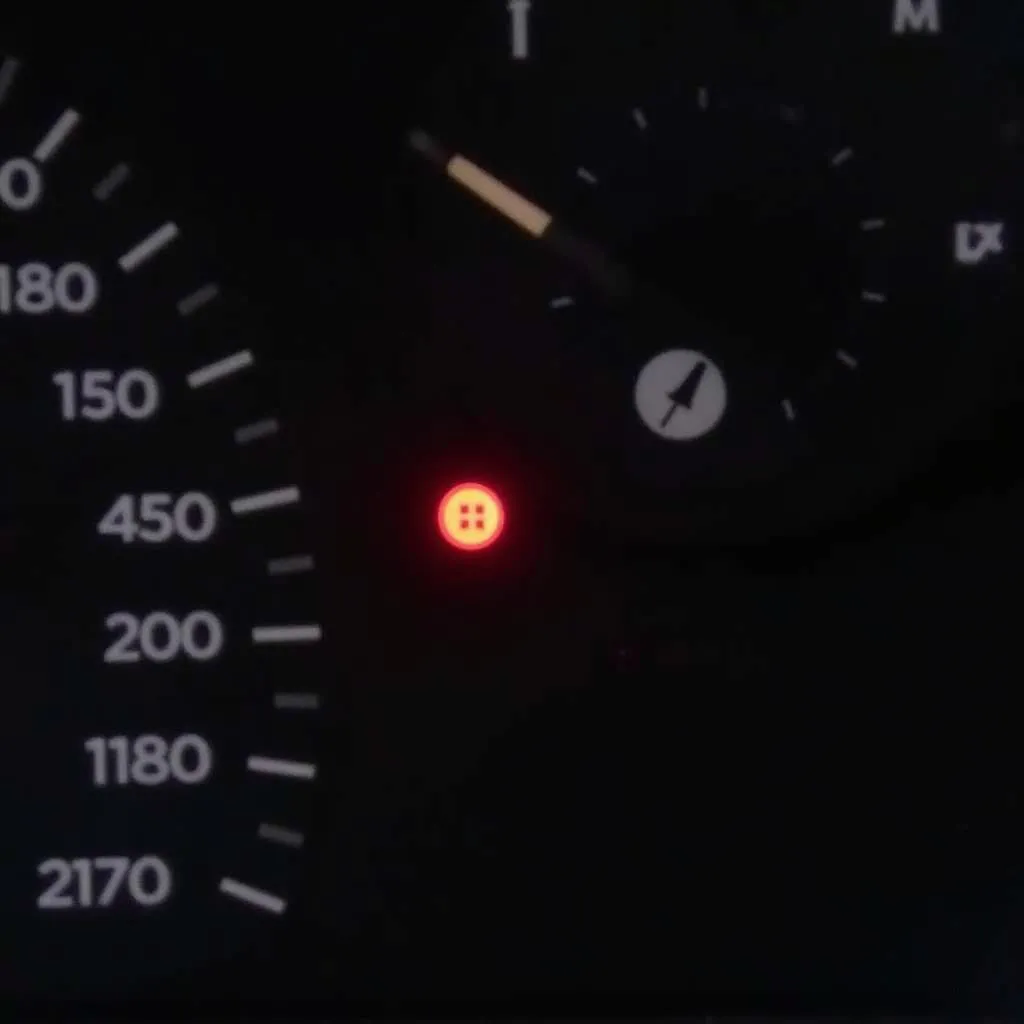A glowing engine warning light on your Seat Ibiza 2011 can be a nerve-wracking experience. Is it a minor glitch or a sign of a major engine problem? This comprehensive guide is here to help you decipher the meaning behind that amber glow and provide clear steps on how to address it.
Decoding the Engine Warning Light
Unlike warning lights with specific meanings (like oil pressure or battery charge), the engine warning light, often amber or yellow, is a general indicator. It signals a potential issue detected by your car’s Engine Control Unit (ECU). The ECU constantly monitors various engine functions, and when it detects an anomaly, it triggers the warning light.
Common Causes of an Engine Warning Light on a Seat Ibiza 2011
While the engine warning light can point to a broad range of issues, some are more common in the 2011 Seat Ibiza than others:
- Faulty Oxygen Sensor: This sensor measures the oxygen in your exhaust, crucial for maintaining optimal fuel efficiency and emissions.
- Loose or Damaged Gas Cap: A poorly sealed gas cap can disrupt fuel system pressure, triggering the warning light.
- Worn Spark Plugs: These ignite the air-fuel mixture in the engine cylinders. Worn spark plugs can lead to misfires and reduced engine performance.
- Malfunctioning Catalytic Converter: Responsible for reducing harmful emissions, a failing catalytic converter can severely impact engine performance.
- Issues with the Mass Air Flow (MAF) Sensor: This sensor measures the amount of air entering the engine, essential for proper air-fuel mixture calculation.
 Seat Ibiza Engine Bay
Seat Ibiza Engine Bay
What to Do When Your Engine Warning Light Turns On
- Don’t Panic: While it’s crucial not to ignore the warning, it’s rarely a sign of imminent engine failure.
- Assess Your Driving Conditions: Were you driving aggressively, towing heavy loads, or experiencing unusual engine behavior before the light came on? This information can be valuable when diagnosing the issue.
- Check Your Gas Cap: Ensure it’s securely tightened.
- Monitor Engine Performance: Pay attention to unusual noises, vibrations, loss of power, or changes in fuel economy.
- Retrieve Diagnostic Trouble Codes (DTCs): The most effective way to pinpoint the problem is to read the DTCs stored in your car’s ECU. You can do this using an OBD-II scanner, a device that plugs into your car’s diagnostic port, typically located under the dashboard.
- DIY Approach: Affordable OBD-II scanners are available for purchase, allowing you to read and clear basic codes yourself.
- Professional Diagnosis: For more complex issues or if you’re uncomfortable with self-diagnosis, seek assistance from a qualified mechanic specializing in Seat vehicles.
 Using an OBD-II Scanner
Using an OBD-II Scanner
The Benefits of Remote Diagnostics and Software Solutions
In today’s technologically advanced world, remote diagnostics and software solutions have revolutionized the way we approach car repairs:
- Remote Diagnostics: Allow skilled technicians to access your car’s ECU remotely, read DTCs, analyze data, and often provide a preliminary diagnosis without needing your physical presence. This is particularly useful for initial assessments and can save you time and trips to the mechanic.
- Software Updates and Reprogramming: Manufacturers often release software updates for your car’s ECU to improve performance, fix bugs, and even address specific issues that might trigger the engine warning light. These updates can sometimes be installed remotely by specialized technicians, saving you the hassle of visiting a dealership.
Expert Insight: “Remote diagnostics and software solutions are invaluable tools for modern car repair,” says John Miller, a senior automotive electrical engineer specializing in remote diagnostics at a leading European car manufacturer. “They allow us to provide faster and more efficient service, often resolving issues without requiring the car to be physically present at the workshop.”
Don’t Ignore the Warning
While a glowing engine warning light can be unsettling, understanding its potential causes and taking appropriate action can save you from costly repairs and keep your Seat Ibiza 2011 running smoothly. Whether you opt for a DIY approach with an OBD-II scanner or seek professional help, addressing the issue promptly is essential.
Frequently Asked Questions (FAQs)
1. Can I continue driving with the engine warning light on?
It’s best to avoid driving and seek diagnosis as soon as possible. While some issues might be minor, continuing to drive with a potential problem can lead to further damage.
2. Is the engine warning light different from the check engine light?
They are essentially the same. Both terms refer to the same warning light.
3. How much does it cost to diagnose and fix an engine warning light issue?
Costs can vary greatly depending on the underlying problem. A simple fix like a loose gas cap might cost you nothing, while a major repair like a catalytic converter replacement can be expensive.
4. Can a faulty battery cause the engine warning light to come on?
While a weak battery can cause various electrical issues in your car, it’s less likely to directly trigger the engine warning light.
 Professional Mechanic Inspecting a Seat Ibiza Engine
Professional Mechanic Inspecting a Seat Ibiza Engine
5. How often should I get my Seat Ibiza serviced?
Following the recommended service schedule in your owner’s manual is essential for preventative maintenance. Regular servicing can help identify and address potential issues before they escalate, including those that might trigger the engine warning light.


